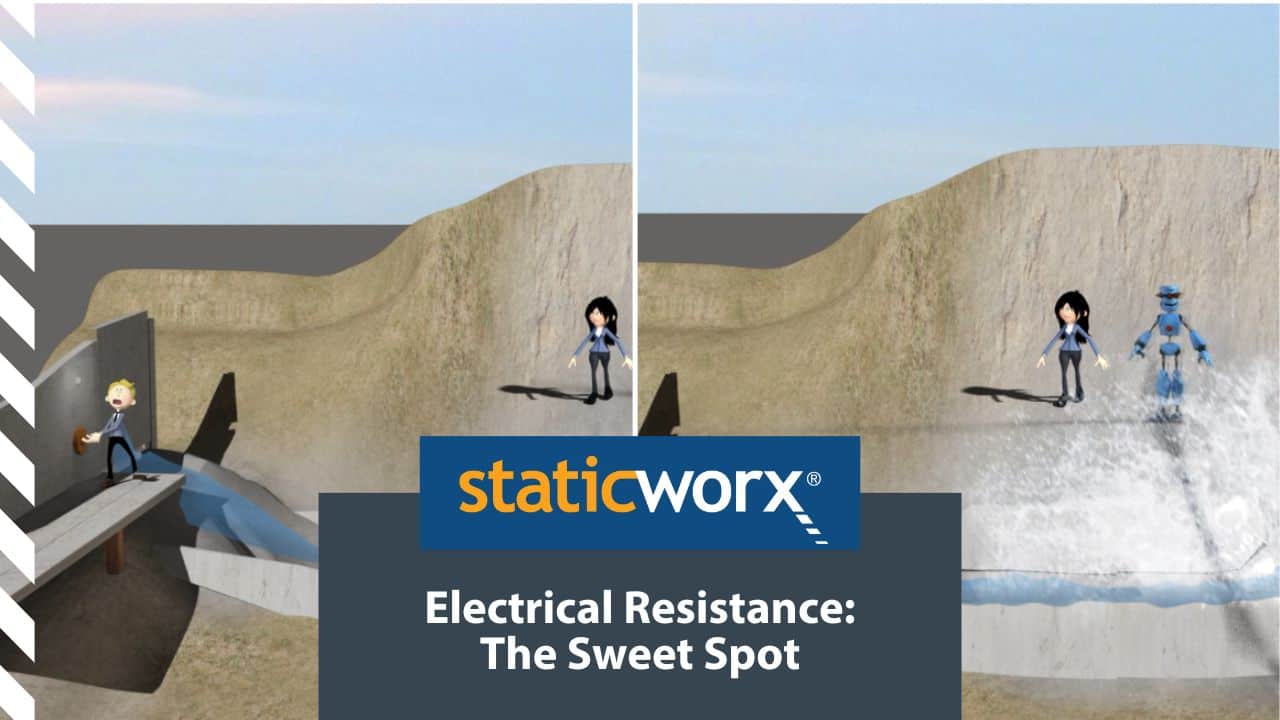
Video: The Case Against Highly Conductive Flooring (NFPA 99)
September 21, 2018
Compliance with the National Fire Protection standard NFPA 99 is sometimes used in evaluating a conductive floor. In fact, NFPA 99 omitted conductive flooring from their safety guidelines for the health-care industry. In this video, we explain why the NFPA test method produces vastly different results from the ANSI/ESD method, and why compliance with the measurements for electrical resistance required by NFPA 99 have no bearing on current industry standards.
To read more about the Case Against Highly Conductive Flooring, visit our Learning Center.
For help or advice about choosing an ESD floor, call us on 617-923-2000, email [email protected], or visit our Guide to ESD Flooring Selection.
The case against highly conductive ESD flooring. NFPA 99 no longer covers conductive flooring.
You may have heard ESD flooring manufacturers refer to a standard called NFPA 99. With roots dating back to the 1950s, NFPA 99 guides health care services in minimizing the hazards of fire, explosion and electricity in their facilities. In 2015, the NFPA removed conductive flooring from the standard.
But let’s forget for a moment that for ESD flooring, NFPA 99 is defunct. To meet the NFPA standard, the electrical resistance of an ESD floor had to measure no less than 2.5 times 10E4 or 25,000 ohms. The resistance test for NFPA 99 is similar to ANSI/ESD Standard Test Method, STM 7.1. Both tests measure electrical resistance or floor’s capacity to resist or reduce electrical current. Neither test reliably simulates a real world environment, both use a battery operated generator to apply voltage across the surface of the flooring material. Battery-operated generators put out direct or DC current which flows in one direction. The electricity in common power circuits travels in waves or AC, alternating current which periodically changes or reverses direction.
An independent engineering lab tested the resistance of ESD floors using both AC and DC currents. Delivered across an ESD floor, AC currents measured as much as nine times higher than predicted by theoretical calculations based on Ohm’s Law. This means, in a real world environment, electricity will flow across the floor far faster than predicted mathematically. That’s why when selecting any ESD floor is crucial to consider safety. It’s also why the FAA in FAA 019e prohibits conductive flooring that measures under one times 10E6 anyplace where personnel may come into contact with energized equipment. In layman’s terms, anywhere electronics are plugged into an outlet.
While NFPA 99 and ANSI/ESD 7.1 are similar tests, they differed in one very important way. The tests for NFPA 99 were done with 500 volts of electricity. ESD 7.1 is done with only 10 volts. 10. That’s one 50th the voltage used in NFPA 99. Why does it matter? Because some people assume the readings are interchangeable and they’re not.
According to Ohm’s Law, voltage correlates inversely to electrical resistance. Put simply, less applied voltage yields a higher resistance reading and vice versa. The NFPA considers a resistance of 25,000 ohms, 2.5 times 10E4 safe if the floor is tested at 500 volts. Tested at 10 volts, the same floor would likely measure over one times 10 to the fifth or 100,000 ohms. Both resistance measurements are considered safe for applications where energized equipment is in use based on their test methods. Now considered the reverse, more applied voltage yields lower resistance readings. Suppose at 10 volts per ESD 7.1, a floor measures 25,000 ohms. At 500 volts, the same floor could measure as low as 2,500 ohms, a resistance so dangerously low that electricity would rocket across its surface, at a rate lethal to humans. If someone standing on kneeling on an overly conductive floor to accidentally become part of a live electrical circuit while servicing or inspecting electrified equipment for example, he or she could receive a dangerous electrical shock.
If a manufacturer claims their highly conductive floor meets the defunct NFPA 99 standard, be sure to ask how the floor was tested and exactly how much voltage was applied.
StaticWorx produces static control flooring products that protect sensitive electronic components from harm caused by electrostatic discharge, ESD. To learn more about preventing static electricity, give us a call or visit our website.
StaticWorx. We keep you grounded.
Have you seen...


Learning Center Articles
- ESD Basics
- Installation & Maintenance
- Selecting & Specifying an ESD Floor
- Technical Information
- 7 Common Mistakes Selecting an ESD floor
- A Guide to ESD Flooring Selection
- Avoid Costly Failures: What You Need to Know When Specifying ESD Flooring
- Choosing ESD Flooring for:
- ESD Footwear: What Is It and When Is It Necessary?
- ESD Footwear for Electronics Manufacturing and Handling Applications
- Facility Managers’ Guide to Selecting ESD Flooring
- The Need for Due Diligence in Specifying Static-Free Flooring
- Standard of Care for Specifying Floors in Mission-Critical Spaces
- Understanding the Hidden Costs of ESD Flooring

StaticWorx high-performance static-control floors protect electronic components, explosives, and high-speed computers from damage caused by static electricity. ESD flooring is part of a system. Choices should always be based on objective, researched evidence. When you partner with us, we look at all possible items that may need to integrate with the floor, and, focusing on your goals and objectives, help you find the right floor for your application.








